As you may already understand from looking into other pieces, the first game of this lesson would be the knight vs 3 pawns.
Try playing this many times with your friends or parents
Game 4.1
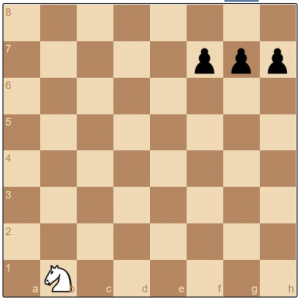
Naturally, the next one is knight vs 4 pawns. Can the knight win here?
Game 4.2
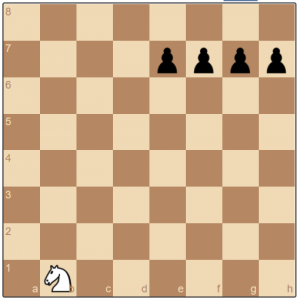
Gradually a more “proper” game with 2 knights vs 8 pawns.
Game 4.3
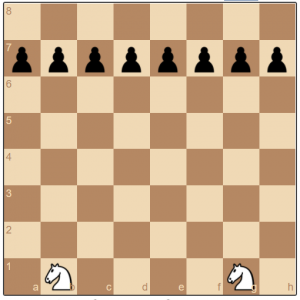
Here we are with the same material for both sides: 8 pawns & 2 knights for each player
Game 4.4
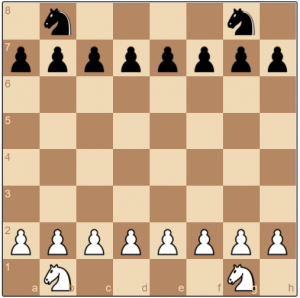
Here is an interesting game. White player can move only the white knight in black’s area. Vice verca with the black player. What is the best strategy to capture all your opponent’s pieces? Have a go! or more
Game 4.5
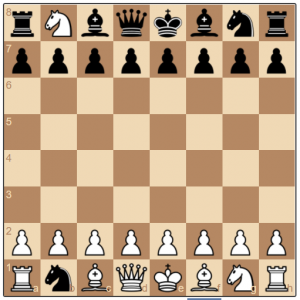
This is not a game, but a position. Have a look here. There is knight on d4 and 8 pawns on the squares that the knight can move to. What do you notice? have you noticed that the knight lies on a dark square, and all 8 squares are light coloured ones? Useful thing to have in mind in your games.
Position 4.6
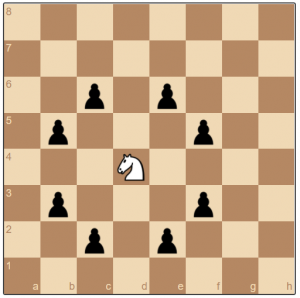
A series of different positions with one white knight and one black rook. Find the LEAST number of moves that the knight needs, to capture the rook. I will leave you to find the answer to all of them.
Position 4.7
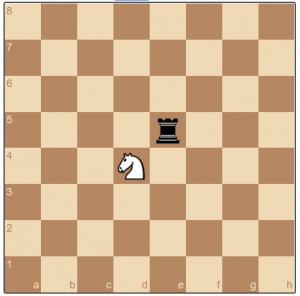
Position 4.8
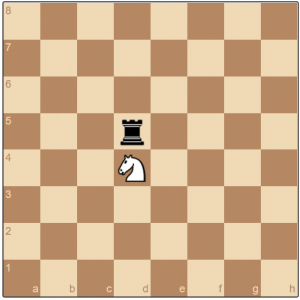
Position 4.9
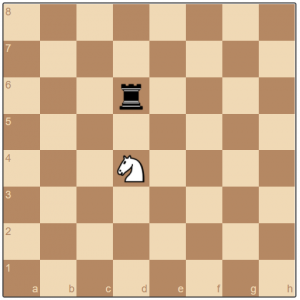
Position 4.10
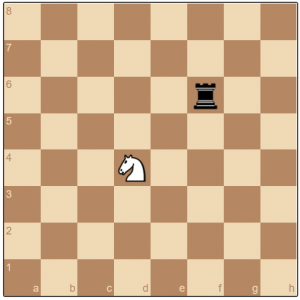
Position 4.11
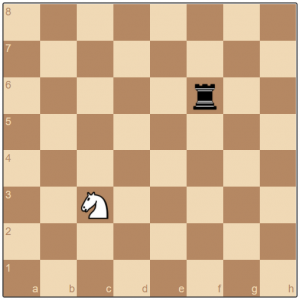
Position 4.11
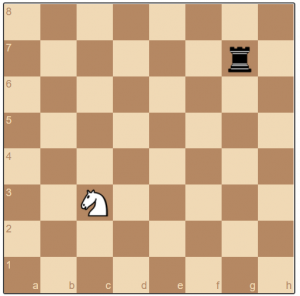
Position 4.12
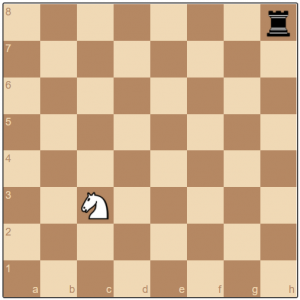
Position 4.13
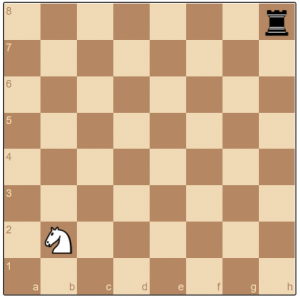
Position 4.14
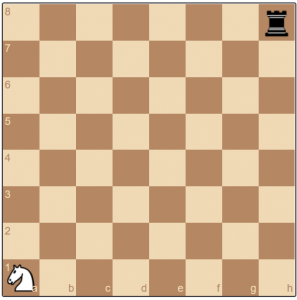
Use the games and the positions above as many times as you can. It is only this sort of training that will enable you to reveal the secrets of how the knight moves in a real game. Teach yourself!
